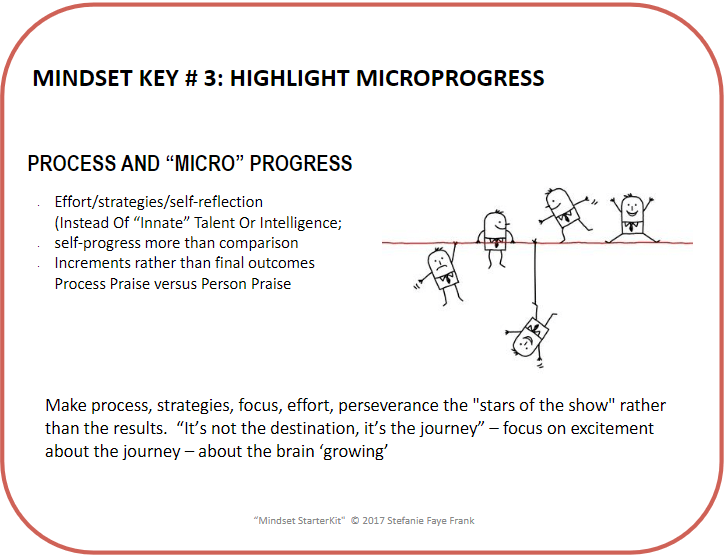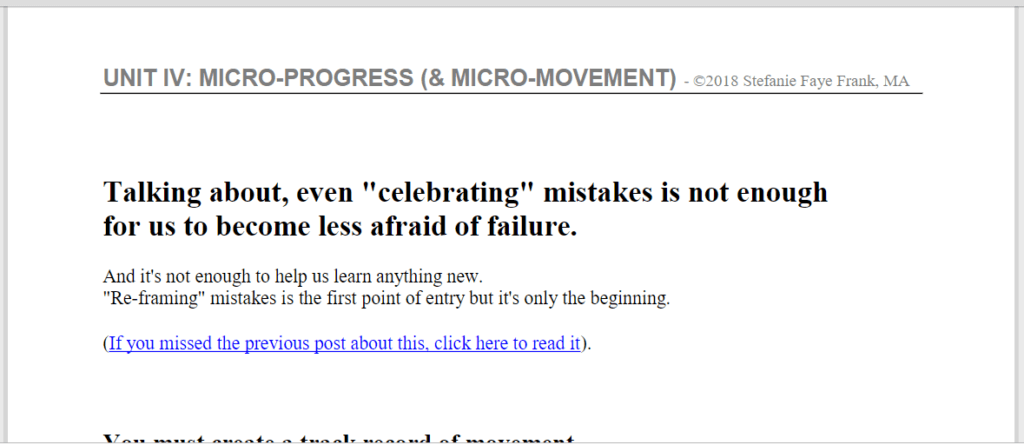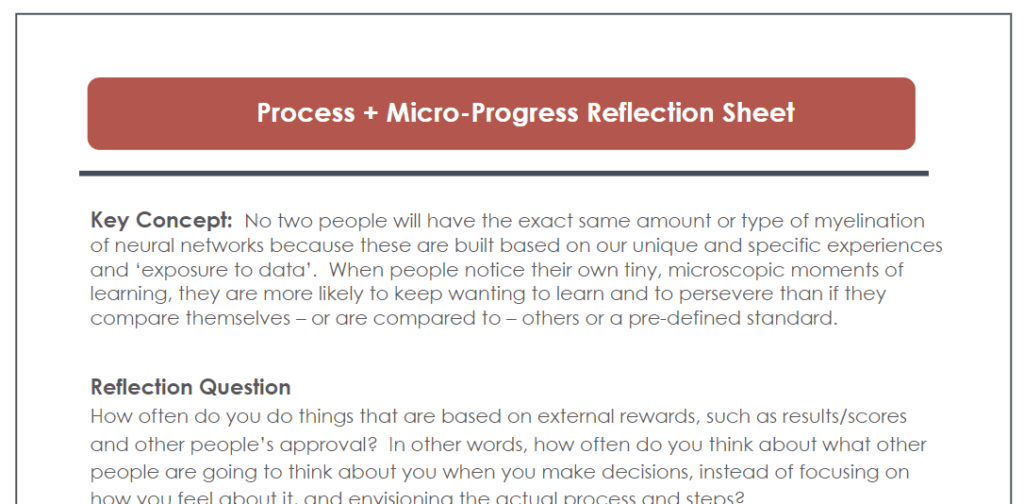Highlighting Micro-Progress
Key #3: Highlight Micro-Progress
You can train your brain to see things that it previously overlooked. The brain has something called the Reticular Activating System.. There are many things that exist in our environment that we just simply don’t notice. Not because they’re not there but because we didn’t explicitly seek them out.
Try this: look around the room and count how many things you see that are blue. Then close your eyes and try to think of – with the same certainty – how many things in the room are purple. it’s pretty hard… not because there wasn’t anything purple, but because you didn’t seek it out, and therefore didn’t consciously notice it.
The same thing with ‘micro progress’… we are so trained to see results according to other people’s standards, that we may not see those tiny ‘wins’ or those tiny pivots that we’ve made.
As an example of really highlighting process, see Stanford’s Jo Boaler’s insightful research and suggestions about Math… it’s about DEPTH, NOT SPEED’ Maths is becoming a beautiful space where we are knocking down old ideas, gender stereotyping, and highlighting some of the richest concepts about the mind and learning.
Here’s an excerpt:
- Tell students you don’t value fast work. Mathematical thinking is about depth not speed.
- Don’t let mathematical discussions be driven by the fastest students.
- When asking for hands up, don’t always take answers from the fastest students.
- Don’t use flash cards, speed competitions, timed tests, instead value depth, creativity, different ways of thinking about maths, and different explanations.
That’s an example of how school has trained us to believe that ‘progress’ means we get the answer the fastest… but progress can be about depth and making thoughtful connections.
[tab:EXTRA RESOURCES]
Download the Micro-Progress Graphic
Download the Micro-Movement article
[tab:REFLECTION QUESTIONS]
Reflection Questions
Download the Reflection Questions
Thanks for joining me for Unit 4! Next up: Unit 5 – Alpha Instinct
Unit 4


